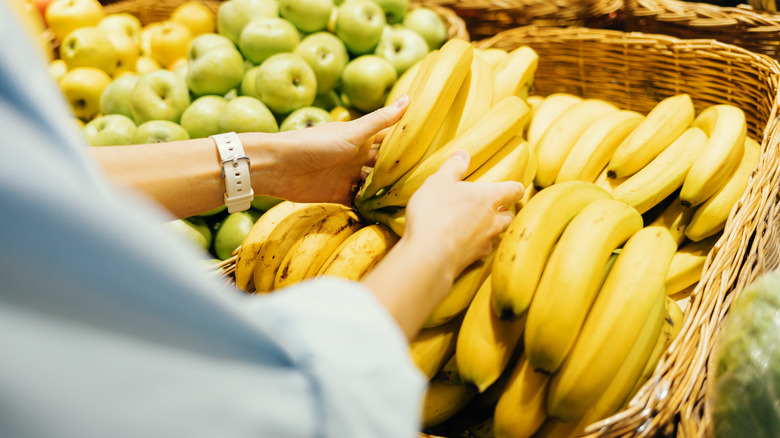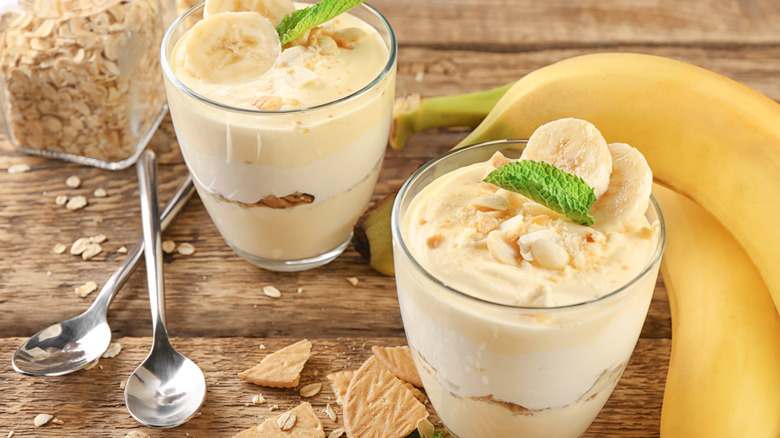The Most Common Type Of Banana You'll Find At The Grocery Store
Did you know there are hundreds of different types of bananas? According to the Australian Banana Growers' Council, bananas are believed to be 10,000 years old — for reference, that's back when Ice Age mammoths walked the earth (via the University of Waterloo). Back then, bananas were mostly composed of big seeds and weren't too well-liked, but a cross-breeding of two wild bananas produced a seedless variety that increased in popularity (via the Australian Banana Growers' Council). Today, there are over 1,000 types of bananas in the world, including the Ice Cream and Niño varieties (via PBS).
If this is news to you, that's not surprising. Although bananas have a diverse family tree, there is only one type found in most American grocery stores. How can this be? According to Atlas Obscura, the banana industry and consumers alike are used to one type of mass-produced banana; to introduce another variety would be inefficient and expensive.
So which banana is the one used in our daily smoothies? Up until the late 1950s, the Gros Michel banana reigned supreme in the United States, but today, we're in our Cavendish banana era.
Cavendish bananas dominate in American supermarkets
Cavendish bananas first stepped on the scene in 1826, when they were transported from southern China to Mauritius, but they weren't widely known until the 1900s (via the Australian Banana Growers' Council). Today, these long, sweet, and bright yellow (when ripe) bananas are about all you can find at the average American grocery store, notes The Spruce Eats. This isn't necessarily a bad thing — Cavendish bananas can be an excellent addition to pies, cakes, puddings, and more, and they contain ample amounts of potassium and fiber (via Britannica).
Perhaps most notably, Cavendish bananas can be found in grocery stores year-round, meaning you don't have to sacrifice your banana bread obsession during any season. There is a danger to this, however. Biologist Rob Dunn, via Wisconsin Public Radio, warns that monoculture farming, the method by which Cavendish bananas are globally produced, could lead to disease. "It, too, is susceptible to a bunch of different pathogens, and so there are now several that threaten to wipe it out," Dunn said.
So while the Cavendish may dominate our supermarkets and our stomachs, for now, only time will tell if they'll remain the primary banana of our grandkids' generation. If you don't want to wait for a global banana disease to branch out, The Spruce Eats suggests trying farmer's markets or local stores for apples, Lady's Finger, and other varieties of bananas.

